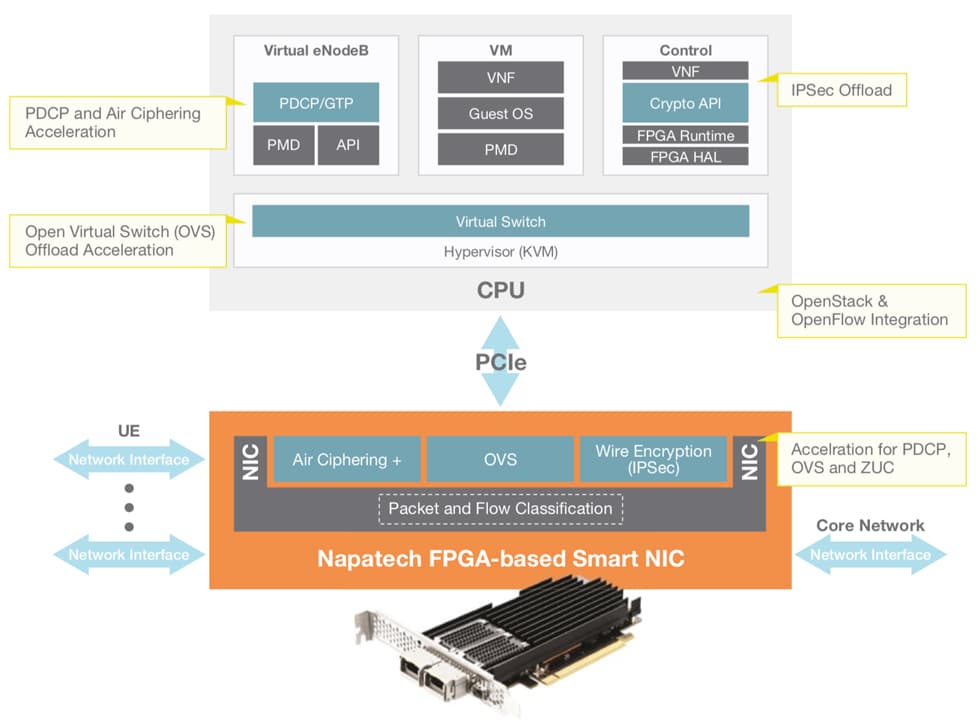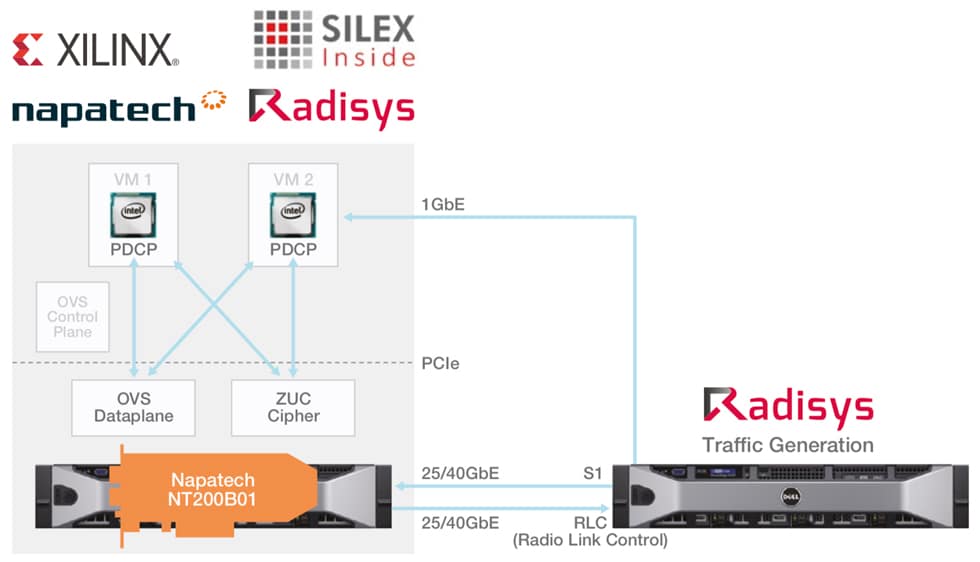Reconfigurable accelerated RAN
for 5G mobile network operators
Solution Description
OVERVIEW
With 5G on the horizon, mobile network operators are hungry to make the shift from proprietary hardware to standard server platforms. In many instances, however, standard platforms struggle to meet network performance requirements due to the CPU-intensive demands of mobile applications. To realize the promise of 5G, a new level of performance is therefore required at the hardware layer.
Napatech’s Reconfigurable Accelerated RAN solution allows network operators to reimagine their infrastructure by alleviating CPU bottlenecks and increasing system performance by a factor 10.
PROBLEM
To meet demands of 5G, Radio Access Network (RAN) architectures are undergoing a transformation to increase deployment flexibility and performance, while continually curbing total cost of ownership. This transformation includes the capability to place selected functions closer to the edge network and the ability to increase RAN resilience.
Network Function Virtualization (NFV) is emerging as a viable approach to increase network flexibility and reduce time to market for new services. The current NFV deployment model in RAN architectures utilizes standard x86 servers with software only. But this approach introduces major performance bottlenecks due to the heavy application workloads including the compute intensive Packet Data Convergence Protocol (PDCP), managing the ciphering and integrity protection, and other mobile application workloads.
Reconfigurable Accelerated RAN Solution Stack.
SOLUTION
The partnership between Napatech, Radisys, Xilinx and Silex Inside has bred a best-in-class solution that enables standard servers to perform a significant part of the processing needed on the edge network. By offloading CPU-intensive functions such as virtual switching and PDCP ciphering tasks from the general-purpose processors, the solution successfully delivers a 10x performance increase.
The solution enables software-based NodeB, Radio Network Controllers, Mobile Stations, Gateways, testing equipment • and other mobile network applications and services to scale from less than one gigabit on standard servers, to more than 10 gigabits. Major functions accelerated in this solution include air-ciphering (ZUC, Kasumi, SNOW3G), OVS and IPsec.
BENEFITS
- Increased throughput and lower latency: By offloading the encryption and decryption of the mobile traffic, as well as the Open vSwitch (OVS) dataplane for de-multiplexing traffic into the VMs hosting the PDCP application, the overall application throughput is signifi-cantly increased and mobile latency of mobile applications
- Outstanding scalability: Enables software-based NodeB, RNC, gateways, and other mobile network applications to scale from 1G to more than 10G running on standard server platforms
- Efficient CPU utilization: Offloads heavy networking and cryptography tasks from host CPU(s), freeing up general purpose processors, thereby increasing the performance of the NFV infrastructure
- Cost and power optimization: Reduces power consumption and CPU utilization providing an optimized performance/$ and performance/W solution for LTE and 5G applications that scales with network requirements
- Wide compatibility: Fits into any existing deployment model through OpenStack and M-CORD integrations
- Full agility: Based on open and generally available technology for OVS and DPDK
The solution is based on Napatech’s reconfigurable FPGA SmartNICs and includes components from key partners including Xilinx FPGAs, Radisys PDCP software stack and Silex Inside crypto technology.

